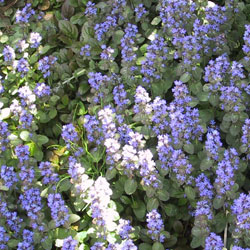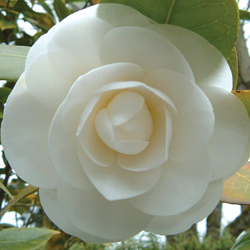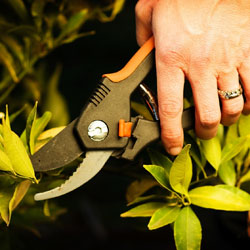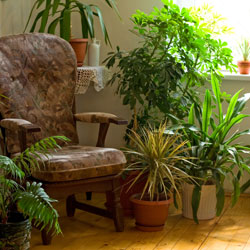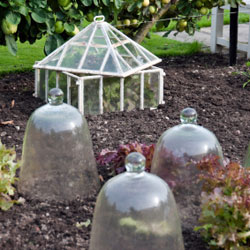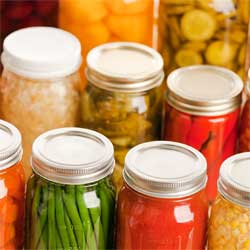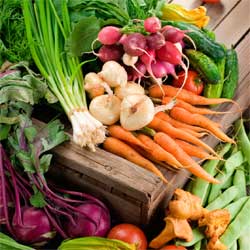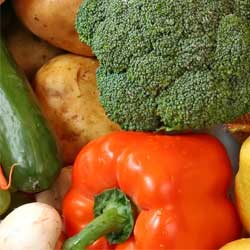Transform summer garden pots, planters and window boxes into magical displays this fall. The addition of mums, winter pansies and ornamental cabbage and kale are always excellent choices but you can really spice things up with the inclusion of a few of these colorful, cold-hardy selections. Which ones will look best for your autumn landscape?
- Acorus gramineus ‘Ogon’
This graceful, fan-shaped acorus variety is ideal for adding height to plantings. It keeps its color and shape into the winter for visual interest as other plants lose their vibrancy. - Acorus gramineus ‘Variegatus’
This is the white-variegated version of ‘Ogon’. Its white-green striping is the perfect complement to mixed planting in silver, pink, purple or blue, and its lightness adds freshness to the arrangement. - Ajuga reptans ‘Burgundy Glow’
This ajuga has a trailing habit and pretty, variegated leaves. Its blue flowers are scattered in fall and summer but this plant blooms profusely in springtime. - Ajuga reptans ‘Mahogany’
The rich mahogany color of the shiny, short-stemmed leaves turns darker and more lustrous in the winter, ideal in a frosted or snowy landscape. Pretty bright blue flowers punctuate this creeper, mostly in the spring. - Ceratostigma plumbaginoides ‘Leadwort’
The prolific flowers of this plumbago are an intense gentian-blue and the foliage turns bright red in low temperatures, adding visual heat to the landscape even on cold days. - Euphorbia amydaloides ‘Purpurea’
This pretty perennial is exceptionally frost resistant. ‘Purpurea’ features upright branches with leaves that form a rosette pattern and turn from reddish to purple in the cold. - Helichrysum thianschanicum ‘Icicles’
Here’s an easy, fast-growing helichrysum variety with striking, velvety-silver leaves and a compact growth habit. - Lamiastru galeobdolon ‘Herman’s Pride’
‘Herman’s Pride’ has serrated, shiny silver leaves with green venation and yellow flowers in the spring. The plant trails as it grows, making it perfect as an accent in hanging baskets, taller containers and window boxes. - Lavendula lantata ‘Silver Leaf Lavender’
This lavender variety has silvery-white leaves that are velvet-like to the touch and hold their color throughout the winter. Dark purple-blue flowers appear by the second year and contrast beautifully with the foliage. - Lysimachia nummularia ‘Goldilocks’
Proven to do equally well in both sun and shade, ‘Goldilocks’ exhibits wonderful versatility. The golden foliage creeps and hangs in lush profusion of round, shiny leaves. - Salvia officinalis ‘Icterina’
This sage has a glowing, golden-yellow variegated leaf. ‘Icterina’ maintains its shape and holds its color long into the winter. - Salvia officinalis ‘Purpurascens’
The eggplant-colored leaves of this sage warm up any planting. Try it as a culinary herb as well and enjoy the subtle taste. - Salvia officinalis ‘Tricolor’
‘Tricolor’ offers a unique combination of purple leaves with white borders that turn pink when temperatures drop.
No matter which of these plants you opt for, you’ll enjoy the rich colors and variation they bring to your autumn plantings.
